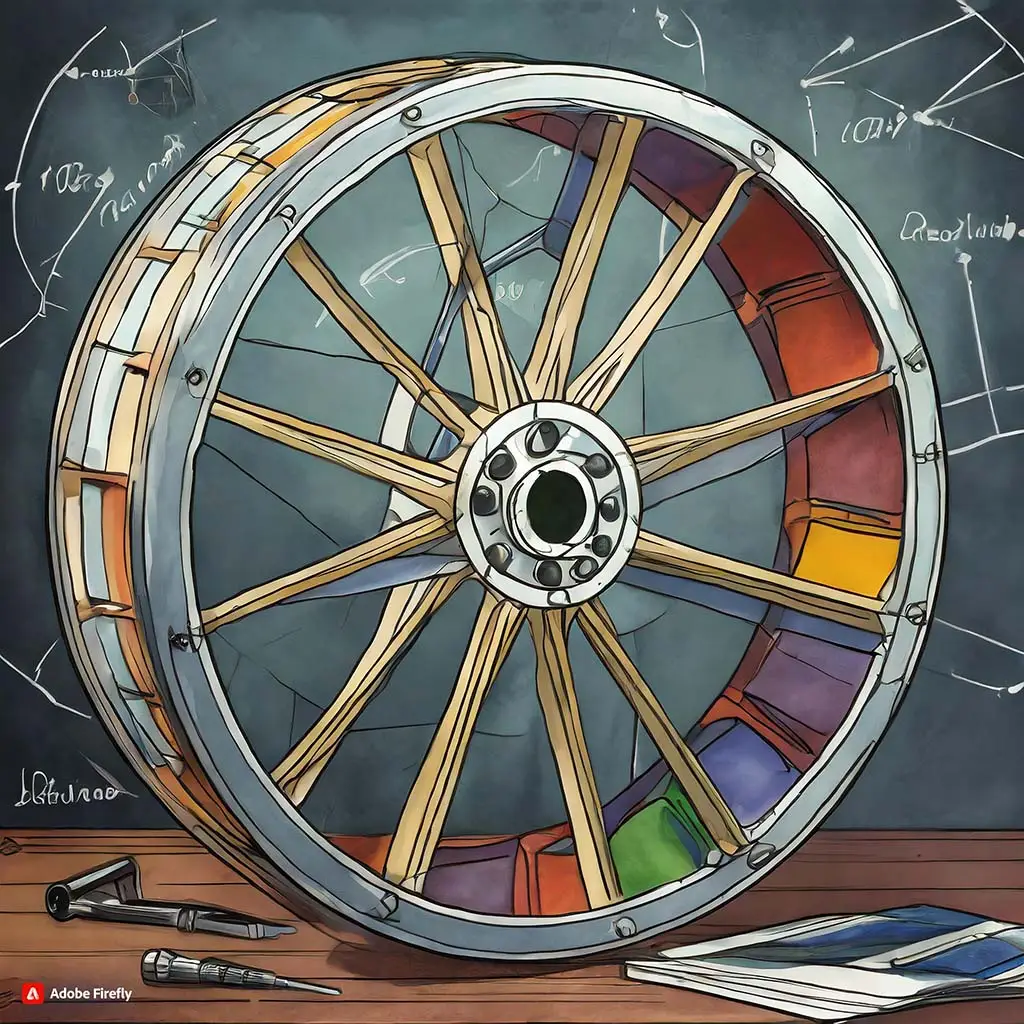Understanding the Parts of a Wheel
Wheels are not just circular objects; they are sophisticated assemblies comprising multiple components that work together to facilitate movement, stability, and vehicle safety. Delving into the anatomy of a wheel reveals a complex system of parts, each serving a distinct purpose. This comprehensive guide will explore a wheel’s various components, functions, and significance in vehicle mechanics.
Tire: The Foundation of Traction
At the heart of every wheel lies the tire, the interface between the vehicle and the road surface. Tires are responsible for providing traction, grip, and stability, allowing vehicles to navigate various terrains and weather conditions with confidence. They come in a plethora of designs, treads, and compositions, each tailored to specific performance requirements and driving environments.
Rim: Structural Integrity and Aesthetic Appeal
Surrounding the tire is the rim, the metal or composite structure that forms the outer edge of the wheel assembly. Rims serve as the foundation for tire mounting, providing structural support and ensuring proper fitment. Beyond functionality, rims also contribute significantly to a vehicle’s aesthetics, with an array of designs, finishes, and sizes available to complement different vehicle styles and preferences.
Hub: The Nexus of Rotation
Central to the wheel assembly is the hub, the component that connects the wheel to the vehicle’s axle. The hub facilitates rotational movement by providing a mounting point for the wheel and enabling smooth rotation around the axle. It also plays a crucial role in weight distribution, ensuring balanced handling and stability during driving maneuvers.
Spokes: Reinforcing Structural Integrity
Spokes are the spokes, the radial rods that extend from the rim to the hub, forming a network of support and reinforcement. Spokes distribute forces evenly throughout the wheel, enhancing strength, rigidity, and load-bearing capacity. While modern wheels often feature fewer visible spokes due to advancements in design and manufacturing, their structural importance remains unchanged.
Tire Bead: Securing the Connection
The tire bead is the reinforced edge of the tire that seats securely onto the rim, forming an airtight seal. It prevents air leakage and maintains proper tire pressure, essential for optimal performance and safety. Tire beads are engineered to withstand high pressures and forces, ensuring reliable tire-to-rim attachment under various driving conditions.
Evolution of Wheel Technology: From Ancient Origins to Modern Innovations
The history of the wheel spans millennia, with its invention marking a pivotal moment in human civilization. Early wheels were rudimentary, crafted from solid materials such as wood or stone, and used primarily for transportation purposes. Over time, advancements in materials, manufacturing techniques, and design principles transformed the humble wheel into a sophisticated engineering marvel.
Ancient civilizations, such as the Mesopotamians and Egyptians, pioneered early wheel technologies, laying the groundwork for future innovations. The introduction of metalworking techniques allowed for the development of stronger, more durable wheels, paving the way for the widespread adoption of wheeled vehicles in agriculture, commerce, and warfare.
In the modern era, wheels have evolved into highly specialized components, tailored to meet the demands of diverse vehicle applications and driving environments. From lightweight alloy wheels used in high-performance sports cars to rugged steel wheels employed in off-road vehicles, the variety of wheel types and designs available today reflects the culmination of centuries of innovation and engineering prowess.
Types of Wheels and Their Applications
Steel Wheels: Durability and Reliability
Steel wheels are renowned for their robust construction and resilience, making them ideal for heavy-duty applications and harsh operating conditions. Their solid construction and rugged design enable them to withstand impacts, abrasion, and deformation, ensuring long-term durability and reliability. Steel wheels are commonly found in commercial trucks, utility vehicles, and industrial equipment, where strength and toughness are paramount.
Alloy Wheels: Performance and Aesthetics
Alloy wheels are prized for their lightweight construction, which enhances vehicle handling, acceleration, and fuel efficiency. Composed of aluminum or magnesium alloys, alloy wheels offer a perfect blend of strength, durability, and aesthetics, making them a popular choice among automotive enthusiasts and performance-oriented drivers. Their sleek designs, polished finishes, and customizable options allow for endless possibilities in enhancing a vehicle’s appearance and performance.
Cast Wheels: Versatility and Affordability
Cast wheels are manufactured using casting processes, where molten metal is poured into a mold and allowed to cool and solidify. This manufacturing method yields wheels with consistent quality, precise dimensions, and cost-effective production, making them a popular choice for mass-market vehicles and everyday driving applications. Cast wheels offer versatility in design and finish, catering to a wide range of vehicle styles and preferences.
Forged Wheels: Strength and Precision
Forged wheels are crafted from solid blocks of metal through a process of intense heat and pressure, resulting in wheels with unparalleled strength, durability, and precision. The forging process aligns the metal’s grain structure, enhancing its mechanical properties and resistance to fatigue and deformation. Forged wheels are favored in high-performance vehicles, racing cars, and luxury automobiles, where lightweight construction, superior strength, and precise engineering are essential for optimal performance and safety.
Conclusion: Navigating the World of Wheels
Wheels are more than mere components; they are the driving force behind mobility, innovation, and progress. From ancient chariots to modern supercars, wheels have played a pivotal role in shaping human civilization and expanding the boundaries of transportation. By understanding the intricacies of wheel components, their evolution through history, and their diverse applications in contemporary vehicles, we gain a deeper appreciation for these remarkable inventions that continue to revolutionize the way we move and explore the world.

